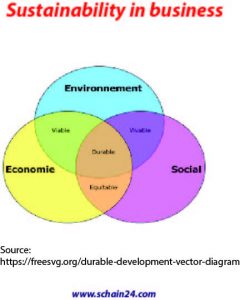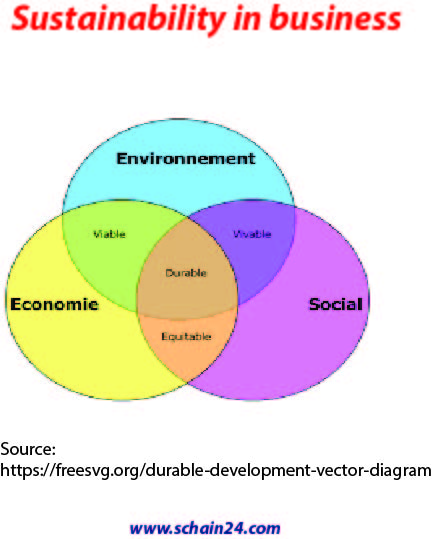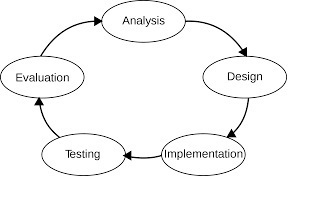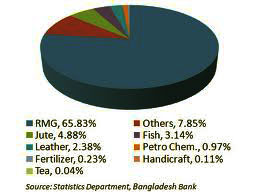Abstract
While discussing Supply Chain Management Network Design the business issue of Supply Chain Sustainability is included by high-caliber executives. The aim is different for every company such as utilizing sustainable materials in the manufacturing process, optimizing supply chains to abbreviate greenhouse gas emissions, relying on renewable energy sources to power facilities, sponsoring edification funds for youth in the local community, etc. There is a shift of paradigm from firm-level to supply chain-level competition and the challenge of integrating sustainability targets into corporate comportment due to growing environmental and ethical cognizance ecumenically. A sustainable supply chain is quantified by a triple bottom line, which are the upstream components of the supply chain.
Keywords: sustainability strategy, business world.
Introduction
The business community has seemed more gradually embrace environmental sustainability partly due to the way the issue has been presented, which fails to take account of how senior managers optically discern the world. In business, sustainability refers to doing business without negatively impacting the environment, community, or society holistically. Sustainability in business generally addresses two main categories. They are the effect business has on the environment secondly, the effect business has on society.

The goal of a sustainable business strategy
A sustainable business strategy’s goal is to positively impact at least one of those areas. When companies fail to postulate responsibility, the antithesis can transpire, leading to issues like environmental degradation, inequality, and convivial iniquity. The aim is different for every company such as utilizing sustainable materials in the manufacturing process, optimizing supply chains to abbreviate greenhouse gas emissions, relying on renewable energy sources to power facilities, sponsoring inculcation funds for youth in the local community, etc.
Sustainable supply chain management
While discussing Supply Chain Management Network Design the business issue of Supply Chain Sustainability is included by high-caliber executives. Supply Chain Sustainability is affecting an organization’s logistics and Supply Chain Network in terms of environment, risk, and cost of waste. This is considered essential to distribute long-term profitability in lieu of monetary cost, speed, and value as an ascendant issue. There is a shift of paradigm from firm-level to supply-chain-level competition and the challenge of integrating sustainability targets into corporate comportment due to growing environmental and ethical cognizance. An authentically sustainable supply chain would do no harm to natural or gregarious systems while engendering profit over an elongated period of time duration. If customers are willing a genuinely sustainable supply chain perpetuates to do business perpetually. A sustainable supply chain is quantified by the triple bottom line “impact on people, profits and the planet”, which are the upstream components of the supply chain.
To make a sustainable strategy needs to ask some questions
The questions are as follows:
How much waste is the organization creating? Is our company culture struggling? Are our hiring practices attracting diverse job candidates? Is our product targeted to help a certain audience? What impact does our company have on the local community?
Answering these questions will help you establish your company’s sustainability objectives to some extent.
The mission for a sustainable strategy
Here are some mission examples of companies who have a strategy to create a sustainable business. Outdoor clothing brand Patagonia’s mission can be broken down into four objectives:
“Build the best product; cause no unnecessary harm”; “use business to protect nature;”
And “do not be bound by convention”.
In each, it’s clear what the company’s values are and how they’re executing against them.
Craft a business strategy
While crafting a business strategy must recollect three bottom lines i.e. profit, people, and the planet. If a sustainable business strategy makes us go out of business we can’t implement it. Diminutive changes can be the commencement point for sizably voluminous-scale impact, for example, electricity preservation by eliminating dispensable utilization when there is no one in the factory at night. We can utilize a sensor to turn off the light when the last person leaves the office at night. It is a cost-preserving opportunity. A Unilever study finds that about 33% of people relish purchasing items that are good for the environment. Inserting the work to build a robust sustainability strategy can avail both the firm and the environment in the long term.
Conclusion
When objectives become a purpose, a sustainable business can be established. But customarily it does not come overnight. A few different approaches may need to apply to make a more preponderant impact.
Reference:
1.Spiliakos, Alexandra.(2018). WHAT DOES “SUSTAINABILITY” MEAN IN BUSINESS? https://online.hbs.edu/blog/post/what-is-sustainability-in-business.
2.ROSENBERG, Mike.(2016). ENVIRONMENTAL SENSIBILITY / A STRATEGIC APPROACH TO SUSTAINABILITY. https://dx.doi.org/10.15581/002.ART-2850
3.





